Torin Geller
PROFILES
- First Timers
5.4.2022


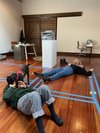


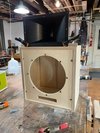

OTB Engineer Torin builds his first set of speakers and chats with speaker-building luminaries to gaining insight for his own journey. process.
At One Thousand Birds, we like to call ourselves a design studio for sound. Rather than limit ourselves as an audio post production company, we try to think bigger regarding our creative output. Our primary business is audio post (and as a sound designer + mixer at our NY studio, it’s what I do every day), but we also create immersive sound + art installations, host live event series, and run a little magazine about sound which you may be aware of. Whenever we can, we encourage our team to create internal projects that inspire them.




In late 2021, I (Torin) started my latest internal project: building our own custom sound system from scratch, with almost no experience. I had always been interested in sound systems, but in recent years my interest had grown considerably, mainly inspired by nights out at private parties like Starvue or at clubs like Nowadays and Public Records, as well as visits to listening bars like Lion Cafe in Tokyo. The DIY kits designed by Devon Turnbull, AKA OJAS, (who also designed Public Records’ incredible sound systems) were also a huge source of inspiration for me getting into the DIY world of loudspeaker building in earnest.


The plan is to create every piece of the system, from the speakers to the amplifiers to the crossovers, and document the process in Hii Mag. During this lengthy and experimental process, I’ll also be interviewing sound system designers that inspired this project -- all to be presented in this nifty little series called 'First Timers'.

–
The first designer I spoke with is Craig “Shorty” Bernabeu, who’s best known for his SBS Slammer brand of club sound systems. Shorty has decades of experience building some of the finest club sound systems in the world, building not only the stacks themselves but all the processing and amplifiers as well, and always all analog. His work has also found its way into recording studios around the world, and, according to Shorty, has been used to master albums for artists like Prince. (Shorty elaborated on this saying, "My SBS Designs gear was used to master Prince's artist Liv Warfield's The Unexpected, which he co-wrote and collaborated on.") You can hear his work both indoors and outdoors at Nowadays in Queens, New York, which in my humble opinion is the best sounding club in the city.
How did you first get into sound systems?
My father was an audiophile. His buddy owned a HiFi shop, and reps were dropping off amplifiers, preamps, loudspeakers, all the time and checking them out. So I was around HiFi audio in the early days when solid state was just really starting to come in and the whole vacuum tube thing was fading away. And then while listening to music I always paid attention to “How are they making a flute sound like this, or why does it sound this way?”, and then learning “Oh, there’s delay on this. There's reverb on this” you know, and then basically nitpicking apart a song; enjoying the composition. Or sometimes not really enjoying a composition but enjoying the way the composition actually sounded fidelity-wise on a sound system, be it car audio or home HiFi. I was selling home HiFi, and car audio in a shop. So I was always getting into that. And then I started going out. And then I got bit by the nightclub audio bug, because of the way club audio sound systems were able to take a crowd and really bring out emotion just by the way of the [sound] pressure. Not loud pressure but just when the actual sonic pressure was hitting the body and people would release and go crazy over a particular part of a record, or the way a DJ was playing a record and manipulating it.
That's funny you say that about it not necessarily being too loud, because that's something I’ve noticed with Nowadays. It's loud, but the way that bass hits you, the way the pressure in the room functions, it’s not overwhelming in any way.
Yeah, yeah. I've never been fond of doing these big, powerful sound systems, I don't think it's needed or necessary. Because if you have a good amplifier behind the speaker in the box, you don't need a lot of power. And I've proven this time after time after time. The intelligence series inside at Nowadays is like, it's about 12,000 Watts total. [I] might have to do the math. And in the outdoor area, the RT series that I built for them, I think it's about maybe 14 or 15,000 Watts total. It's not a lot of power. And that's outdoors, open air, and the pressure is tremendous. And it's all powered by SBS designs amps, SBS slammer processing, and SBS designs processing; all analog, not a lot of power. We started the philosophy of that sound system to not be high sound pressure. You know, play at around 90 DB, not very loud. Along the lines of how David Mancuso’s philosophy was. Music doesn't have to be loud, it's got to be clean and full and have high fidelity.
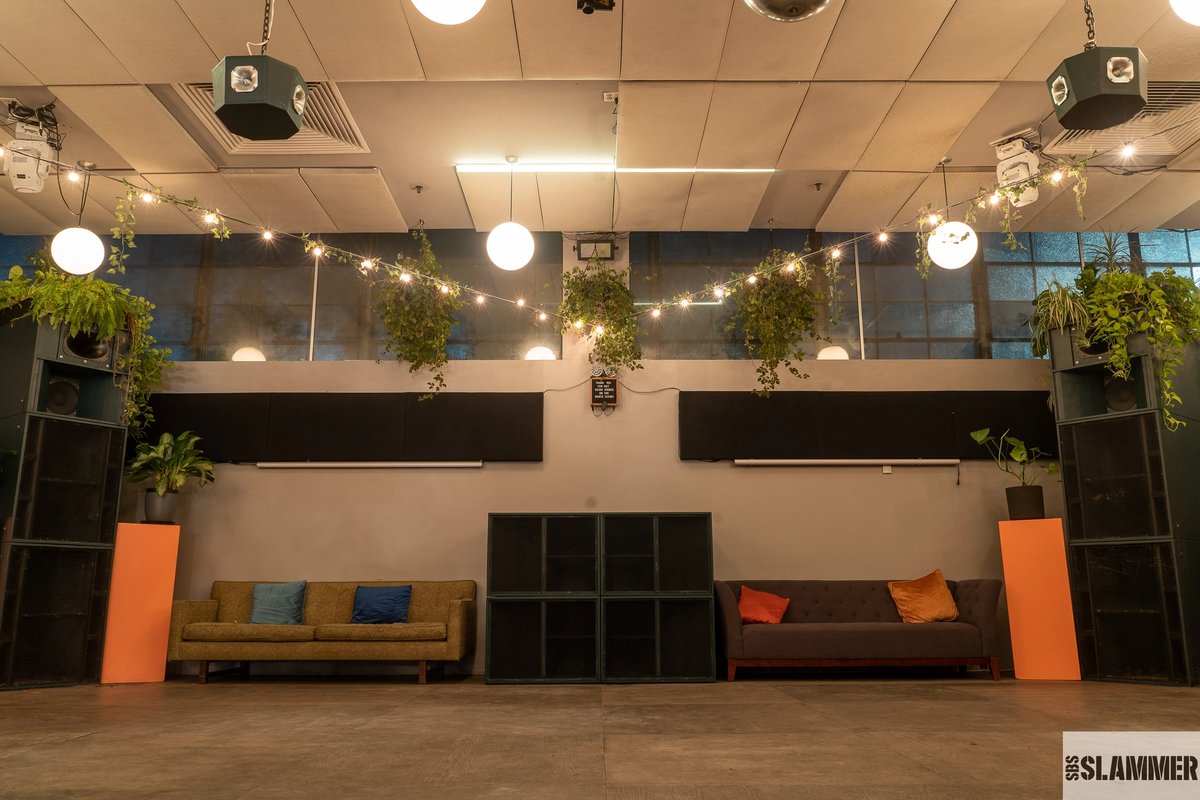
Inside of Nowadays -- SBS' Intelligence Series
Do you remember the first speaker system that you built?
I was doing car stereo stuff, building competition car stereo sound systems. Back in ‘83, Chevrolet introduced this IROC Z28. It had speakers on the dashboard, speakers in the doors and then the back seat had [speakers] down the side. I guess you'd call it a wall.
And then at the very back, the trunk would drop in, so I did subs in the drop-down, like four speakers and on the rear passenger side walls. And in the dashboard and the doors. I ended up putting like 26 loudspeakers in this IROC Z28. And at that time, Rockford Fosgate had this amplifier called the Punch 45. It was 22 and a half watts [per] channel but was high current. [This made it possible to run] 26 loudspeakers off one amplifier. And I made one big crossover on a piece of wood that would crossover all the loudspeakers,so I could have one stereo amplifier run 14 loudspeakers per channel. I would go down in Brooklyn underneath the L on 86th Street, anybody with sound systems would go down there and just be cruising, and there’d be a big sound system battle. I ended up getting a lot of business from a lot of guys in Brooklyn because they heard me coming out of nowhere with these sound systems, and they would just be like, “where are the rest of your amps?” I'm like, “no, that's it.” I was able to take the efficiency of drivers and design the sound systems like that. And then because I was starting to be a home DJ as well, I started designing these speakers for myself. Big ugly speakers, but it was, you know, [my] first shot at it, and then went from there.
You're very much focused on high efficiency speakers. Why do you think that's so important?
If you look at any loudspeaker from, say, the Altec Voice of The Theater series, old Klipsch stuff, the old TAD product line, if you were to take a 15-inch cone woofer, and you move the back of [the cone] from behind, you'll see it's very loose. It doesn't take a lot to move it because they focus on a lot of lightweight cone material, paper material. And when you have that kind of material, you get a lot of [sonic detail] from the cone. The problem now is when you start stepping in these very high power amplifiers. Now, all of a sudden, the cone weight has to be heavier, the voice coils got to be heavier, the suspension of the spider has got to be a stiffer mass, because if it [isn’t], you had a very loose compliance, which back in the early days, we call a soft compliance suspension. From the sheer power [of the amp] that driver would launch forward and blow. It's basically like a truck suspension. You could have an old luxury car, it's very loose. And then you get into a truck, and it's very rough, because it's got a tough suspension for the weight, so the truck doesn't bottom out. Same thing with speaker technology. And when you start getting into these big high-powered loudspeaker systems, now all of a sudden, the little nuances, little breathy notes, little details, they start getting lost, or smeared. That's why when you listen to an old HiFi sound system, you hear the little things that you don't hear on a lot of newer technology. Because they're being designed for sheer output.
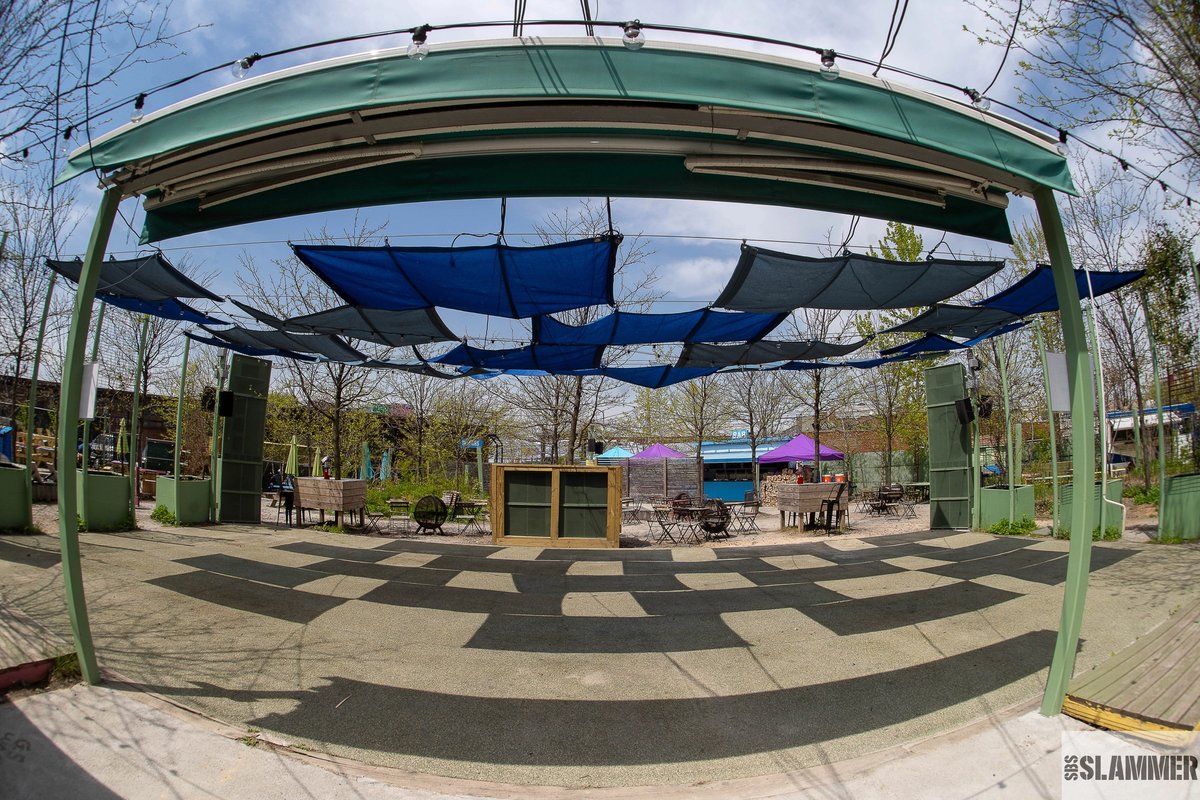
Nowadays outdoor area
We're not into volume. We're doing every last Saturday of the month, at Nowadays, a 24-hour party, which always runs over. When you’ve got people that are going to be in that room for 6, 8, 10, 12 hours, which is not all that big of a space, you don't want to beat them down with volume. You want it to be pleasant, you want to be sweet, you want it to be warm, you want the sound to hug you.
When you’re building a new speaker, how much do all the specs [of the driver] play into it choosing components?
I have a good idea by reading the small parameters of a driver, what that driver is going to do in the box. I was talking to my friend about this the other day. There are some people that say, well, these are the specs, and this is what I'm going to use because it specs the best. And I've said, “well you don't care about what the component sounds like?... “No I just care about what it says on paper.” I go only but so far with that. When I had my system going over there in Brooklyn with analog BKNY, I think I went through six or eight different 15 inch mid bass drivers, as well as subs - I was always changing drivers because I wasn't really happy with it in that box. [I] went by what specs [said would be] good in that box, and then [I’d] listen to it and be like “nah, this isn't really what I want even though it specs well, and mechanically it works well in that box”. It comes down to the seasoning. You know, what hot sauce do you like, they're all hot but what's really gonna fancy you. I got tons of drivers just sitting piled up, stuff I've used, and now I don't like. You look at the parameters to make sure mechanically it's gonna work right but then after that, what does it sound like in that box?
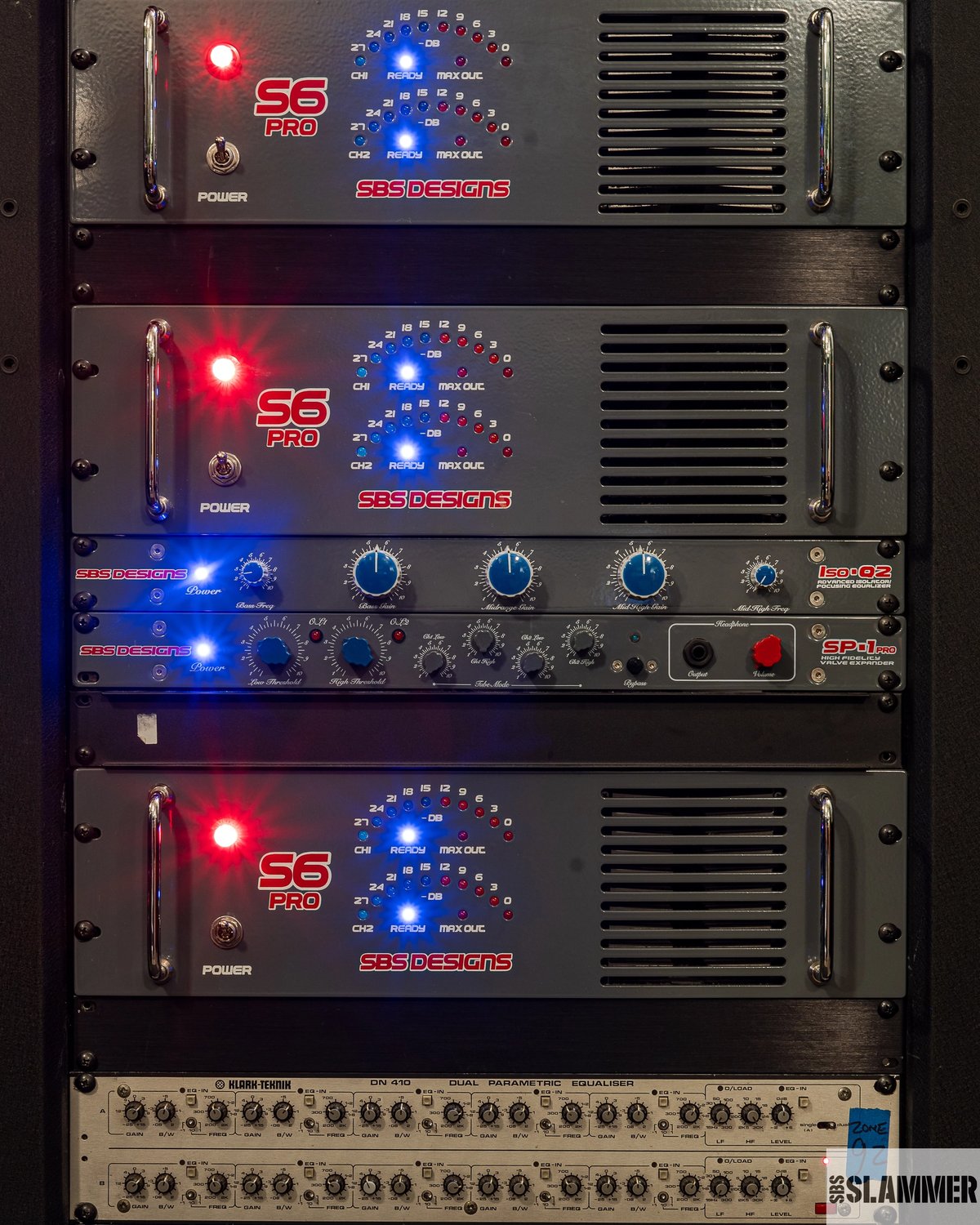
Having been in clubs for awhile now, have you seen changes over time in how the sound systems are being designed?
We're seeing a lot of the majors making a push for club audio. Years ago, it was always private. Lew Feldman, Alex Rosner, Richard Long. Mike Conacchio. He's [got] an outfit out in New Jersey, very smart. James Toth - very, very smart guy. It was always a private badge company that was doing custom stuff for space. And now you're seeing a lot of big brands that have gone after that, they're all in the digital domain. I stick with everything done in analog because, in my opinion, you don't need a digital sound system, when you could design it to where all your physical alignment is done in the box itself, versus [DSP] trying to trick a loudspeaker into doing something it's really not doing, which will never sound right. (“In the box” refers to using all analog components to achieve the desired sound, as opposed to using digital electronics to change the sound in a variety of ways, each of which has its own pros and cons.)
Why the emphasis on all analog?
It’s the purest form. I try to do basically as few crossover points as I have to. When you have a lot of crossover points, there’s phase problems. There's more stuff for the brain to pick up on, it's never gonna sound open, airy, dynamic - it’s always something. Like I don't know, [digital] just don't sound right. It's clean, but I don't know. Sounds weird. You know? That's why when you're looking [at] like a lot of HiFi loudspeakers, it's mostly a two way, with like a 6 dB slope. Very gentle. It just sounds like one piece of sound. You start adding more and more [crossover points] and often, you're starting to hear different layers of a song rather than it all together as one. And that's how I designed the SBS slammer. It's just it's not all this bottom end and everything else is lost. Or just hearing this rolling, mushy, sluggish sub bass, [that’s] loose. It's tight, clean and articulate. It just sounds like one big sound coming off of the speaker stack. There's a lot of psycho acoustics at play.
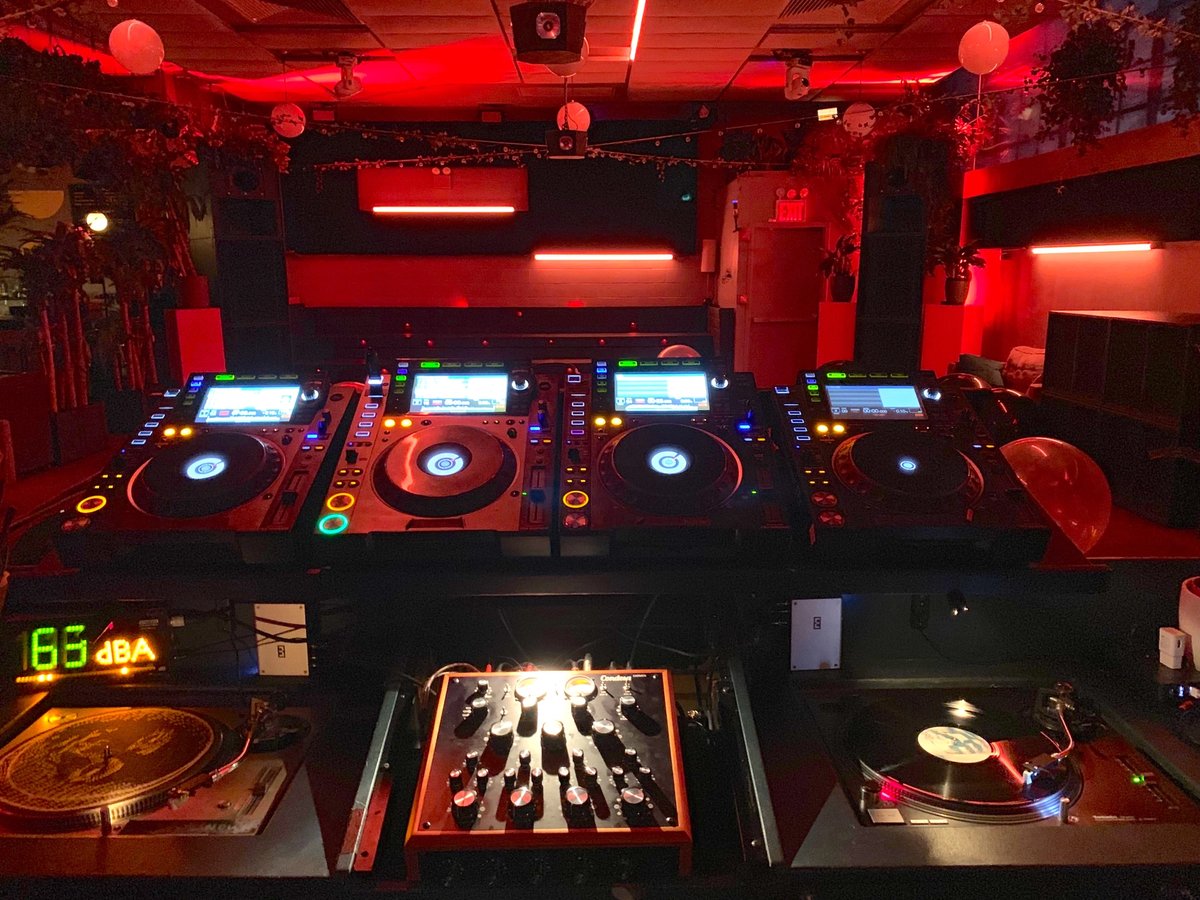
Behind the booth @ Nowadays
From an outside perspective, I could see when you're building a bigger system why digital might seem convenient.
For me, I think that doing an analog system is most convenient, because you have an EQ, a crossover, and loudspeakers. So you EQ the room and away you go. With [digital], you got to have computers, you got to have this, you gotta have that. And when you start questioning why things are not going right? Most of the manufacturers don't really have a real scientific reason why. They say “well, it’s on the engineer”. Really, I just haven’t heard a live performance system anywhere that sounds good [on a digital system]. It’s loud, yeah. It’s not good.
How many crossover points are in a system like Nowadays?
Nowadays is a five way sound system. You have the sub bass. (1) You have the 15 inch mid bass, (2) you have the 12 inch, low mid range.(3) Then you have the compression driver mid-high. (4) And then you have the tweeters hanging. (5) That's a five way sound system. Same thing outside, the only difference is instead of tweeters hanging, you have them in the speaker stacks outside.
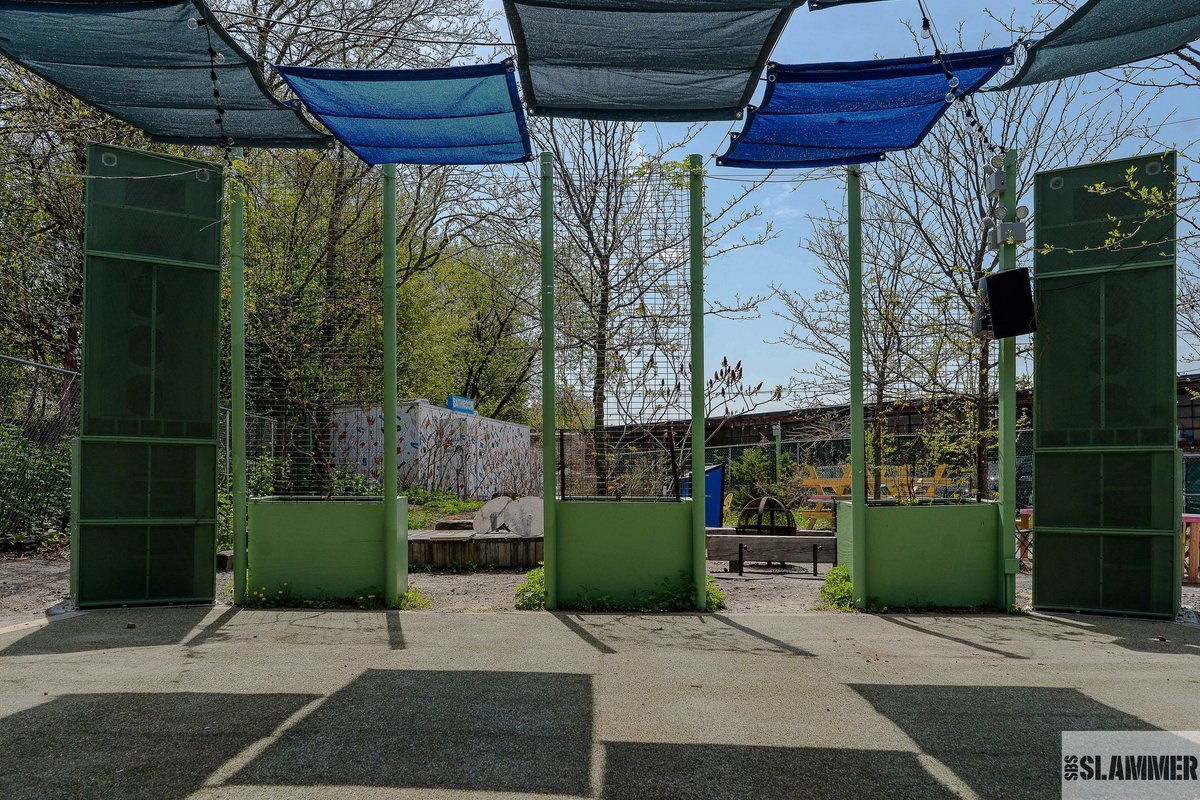
Outside at Nowadays
Why the focus on horn loading?
Because there's a horn distortion that we find really pleasing. And it's realistic. If you go into the back of an amphitheater, it's shaped like a horn. And that's to project whatever is on the stage, amplify it, and send it out to the audience. There's natural nuances and distortions in the music that it brings to life; distortion, but it's a pleasing distortion. [Say], you have a friend down the street, you call their name, they don't really hear you, what do you do? You go like this (cups hands around mouth). Now you’re horn loading your voice to get the 50 yards, 100 yards down the street to your friends.
With a ported or sealed box, direct radiating, it's a very short throw. What I've seen in a lot of systems that have ported mid bass, or ported subs, is incredible energy when you’re two feet in front of the stack. You got 10, 12 feet away, it's like where the hell did the sound go? Then you have to hit it with a freight train of power to get the “acoustical” energy to hit you with the pressure 15, 20 feet out in the middle of the floor. With a horn, you get continuous energy at the mouth, 15 feet in front of it, 20 feet in front of it. You feel an impact on your chest. And the way a crowd responds to it. I think, again, it comes back to psychoacoustics. It comes back to the way the sound is hitting your body. It brings something out of you that I haven't really seen in a ported enclosure. And I just prefer it and the efficiency aspect of it. Now you got to add 3 dB of efficiency with a horn. You get incredible dynamics, and you get a very natural sound.
We talked about the iterative process: getting the design down, then seeing where you can improve. When do you feel like something is finished?
When you can throw whatever you want at it musically, and you can hear everything right. I got a friend who owns Stereo Times magazine. It's an audiophile magazine. He's probably got about $600,000 in two channel stereo, in his listening room. So I go and hear stuff on his system, and I go back and listen on mine, where's my stuff falling off? And not everybody's gonna have that approach, but the best thing to do is to get the design as close as possible and go [listen to] really high-end stuff. It's like when you're making music. You don't want to just listen to it in your room and say, “Alright, it's good.” You want to play it on a boombox, car stereo, and the club if possible and then your studio monitors to make sure that mix is right. You want to always reference what you know, and then take your design to a couple different places.
How much does genre play into design? I feel like in Hi-Fi, there are a lot of highly regarded speakers but only for specific genres.
I try to make it as musical as possible, that’s my approach. Wilson, which is a high-end brand, I've heard them sound so amazing with classical and jazz, but any kind of electronic music that's made in a project studio, something like that, and all of a sudden, it doesn't sound very good. I try to keep my designs where it's gonna sound good whether it's electronic music, house music, disco, funk, jazz, classical. I try to make it as musical as possible. I think a lot of manufacturers don’t even think of certain genres being played on their loudspeakers. “We make $175,000, who’s playing house or techno on $175,000 loudspeakers?”. Companies like Wilson, or Focal with their Utopia loudspeakers, they're not thinking of a DJ playing electronic music, at high SPL on their stuff. Because it's designed primarily for low [volume], critical listening, you know?
For someone who's just starting to build a pair of speakers for themselves, what would you say is the number one thing to focus on?
Auditioning other stuff. Yeah, go audition a ton of loudspeakers. See what you like about this brand and what you don't like about that brand. So you have a reference of what your stuff should sound like.
Any listening rooms in New York that you'd recommend?
Yeah, it’s a private space, but if you [can] get into it, the Joy party. They got a five point Klipschorn system with Threshold class A amplifiers, Threshold pre-amps. [It’s] modeled after The Loft. Alex Rosner actually did some work on that sound system too. That room is definitely a room to hear. You get a great idea of what was going on at The Loft.
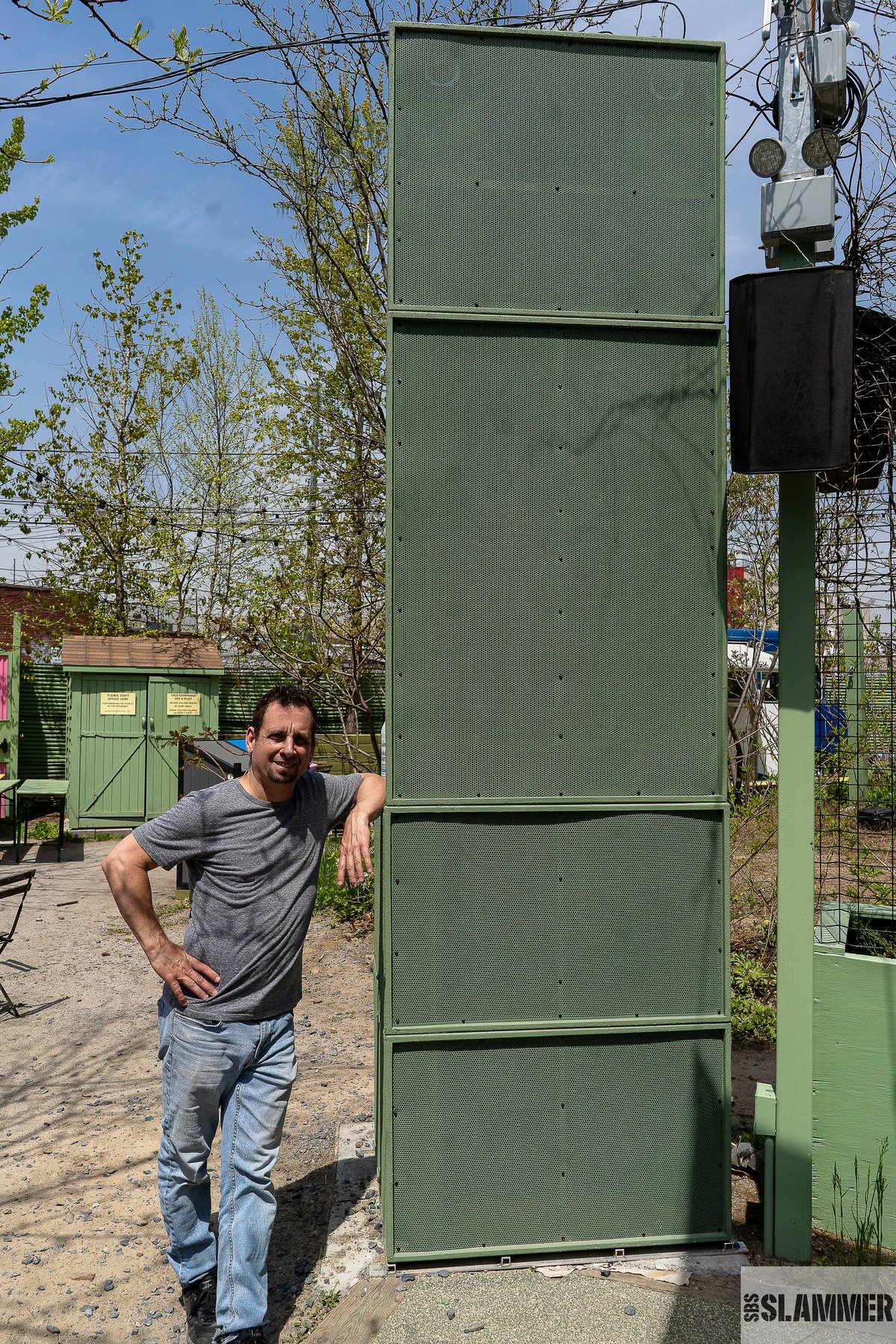
SHORTY W R.T SERIES STACK
----------------------------------
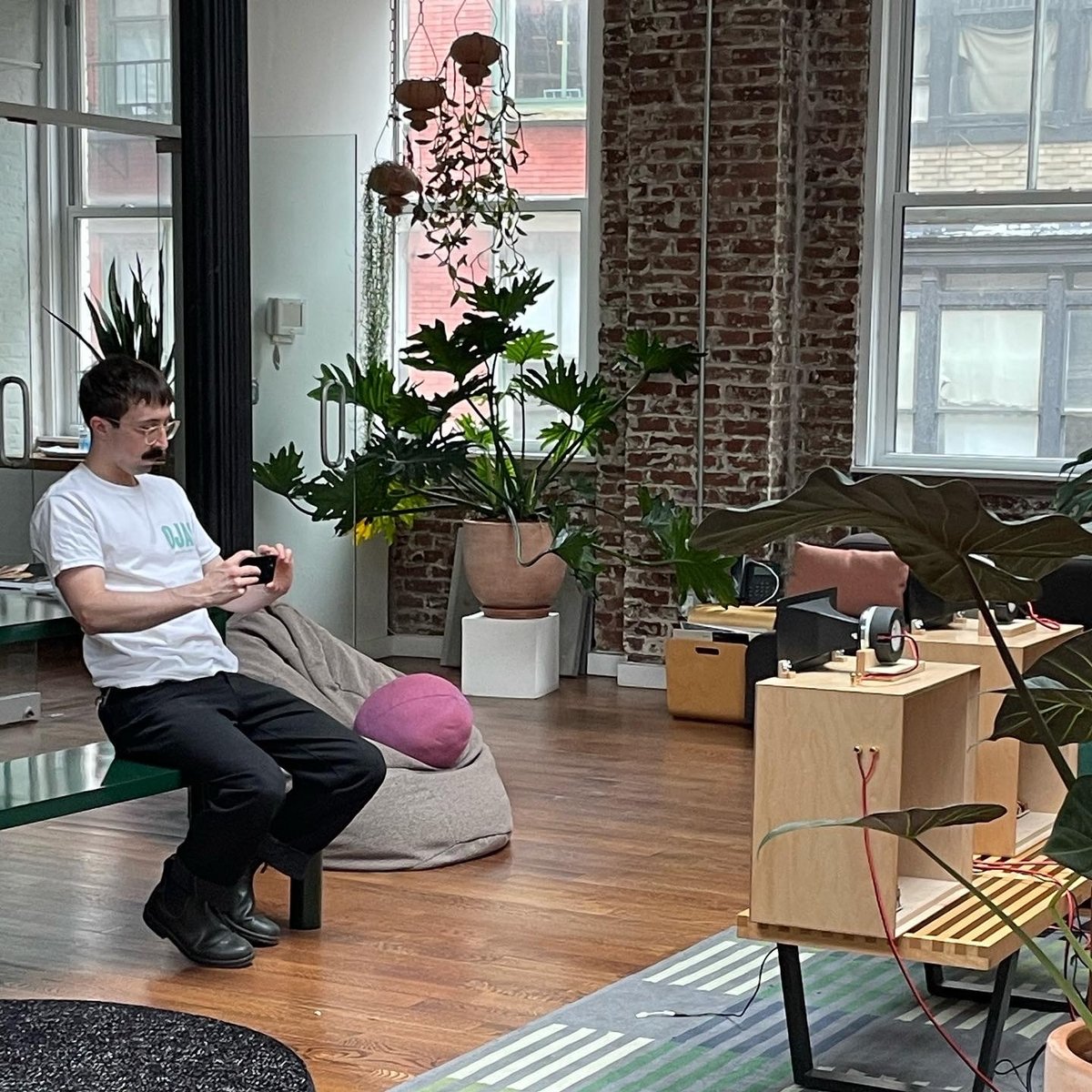

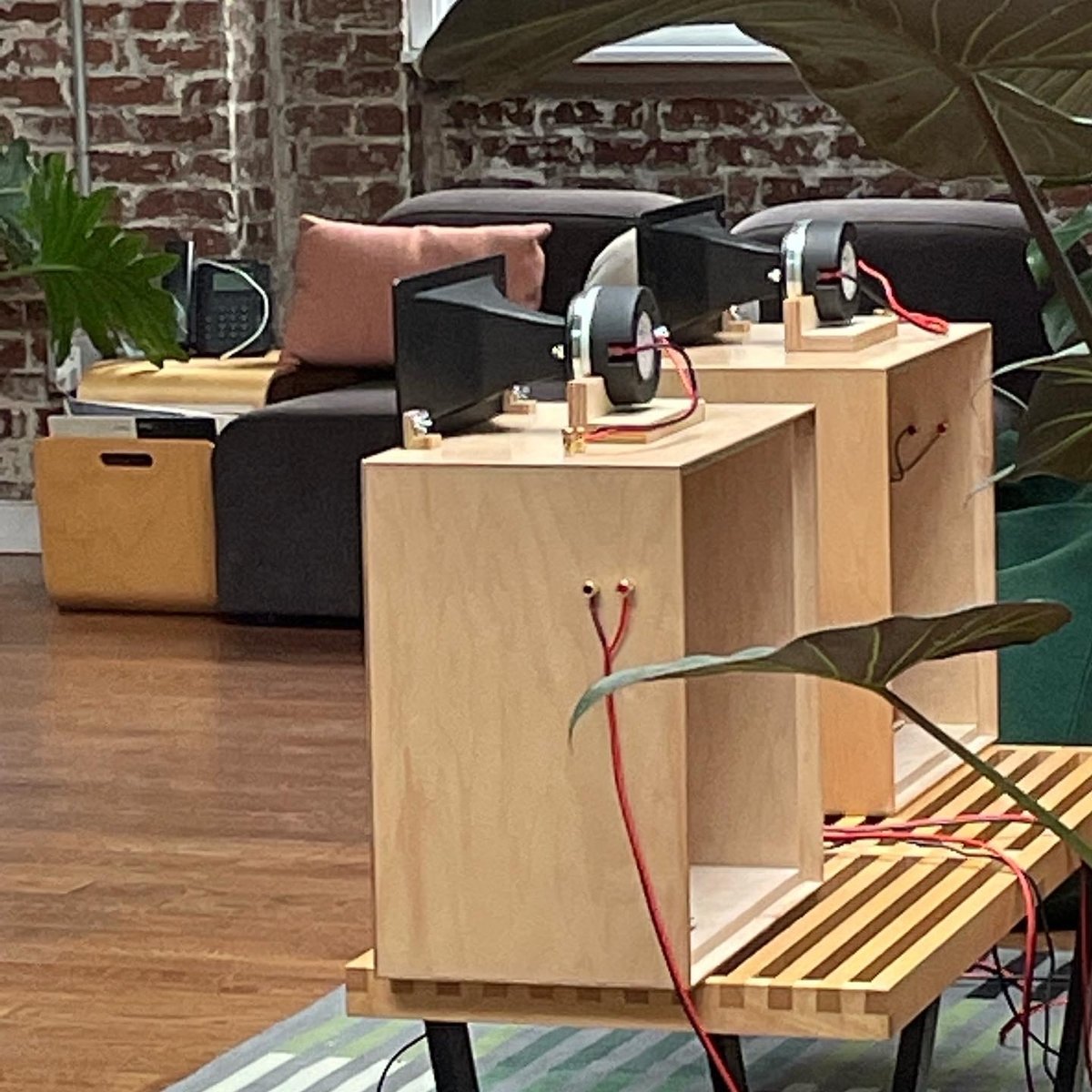
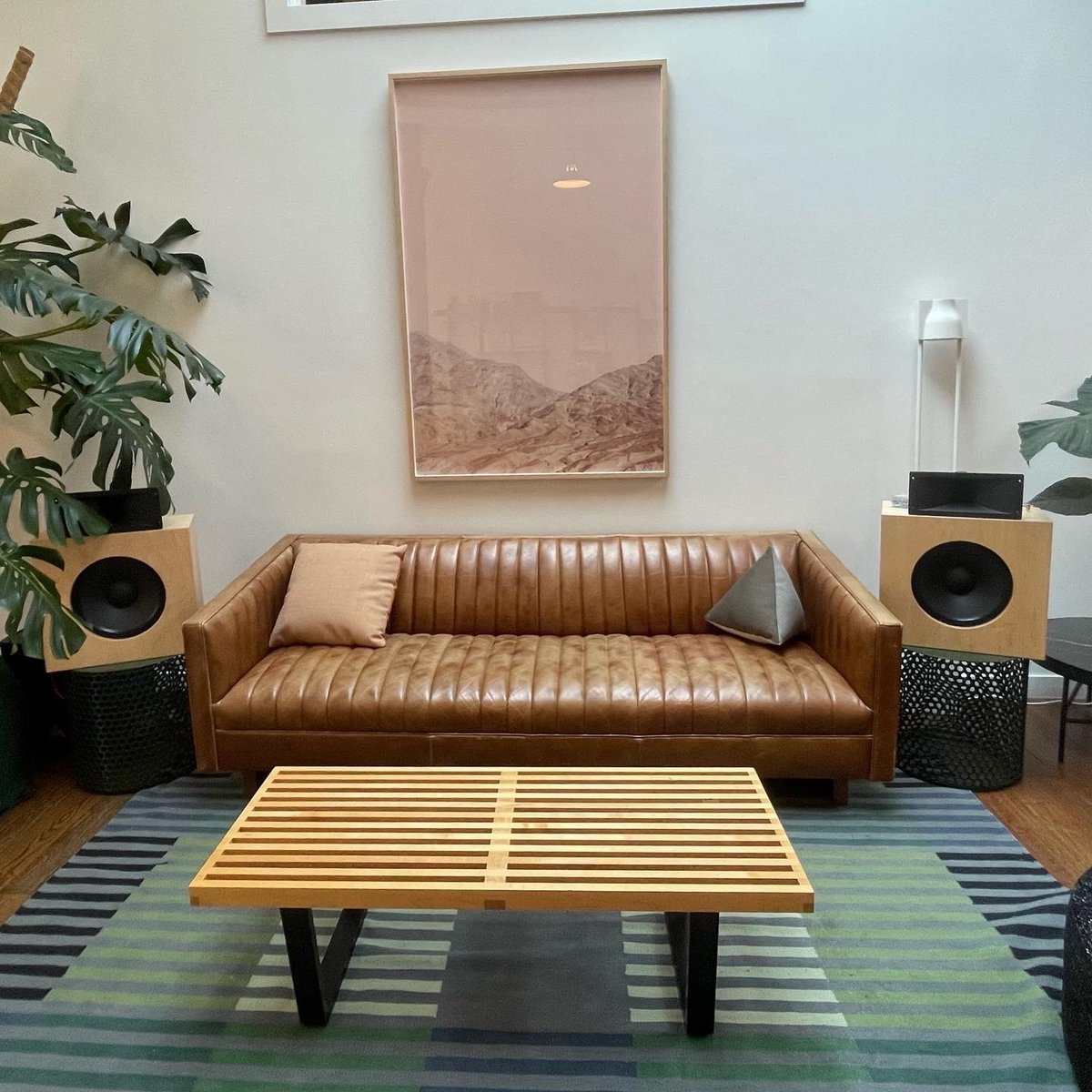
----------------------------------
Check out the resources below if you’d like to learn more about speaker building and audio.
Basics:
Forums:
Youtube:
Inspiration:


